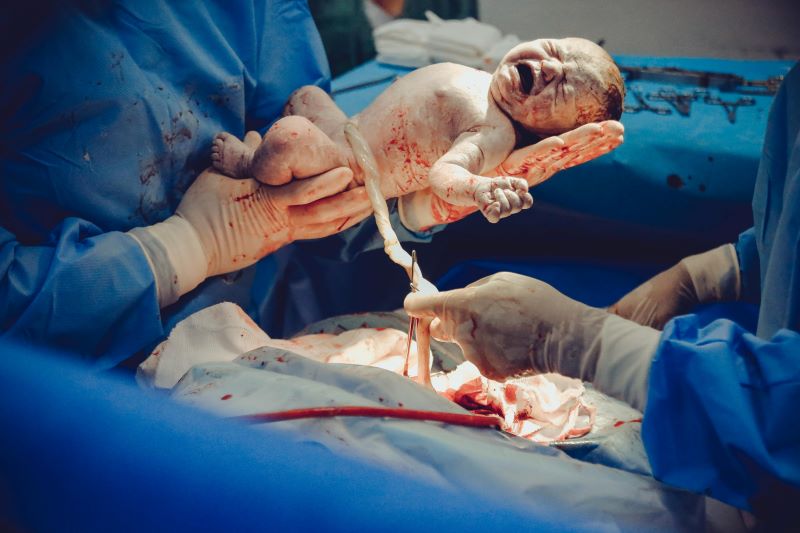Autism Spectrum Disorder (ASD) is a complex condition that affects a person’s social skills, communication, and behavior. People with autism often have many strengths, like being able to focus extremely well on specific topics but they also face challenges in daily life, like struggling to interact with other people.
The biggest challenge we face is not knowing exactly what causes autism. Research suggests it’s a combination of things passed down from our parents (genetic) and things we encounter in the world around us (environmental), but we don’t how these two impact the risk of actually getting autism. This uncertainty makes treatment very challenging, and families are constantly looking for effective therapies.
Stem cells, umbilical cord stem cells specifically, have emerged as promising treatment for ASD and its symptoms. These cells can transform into other types of cells to help treat different medical conditions. The therapeutic possibilities of stem cells has dramatically increased in recent years as researchers learn more about how they work and can potentially be used to treat different medical disorders like ASD.
Stem cells- what are they exactly?
Most of us don’t give much thought to the cells in our body. But these tiny little units are critical to how our body functions. Each cell has a specific role; for example a heart cell, brain cell, liver cell, or immune cell. However, they don’t start out like this. At the very beginning, cells are unspecified. This means that they have not yet been assigned a specific function yet. These are stem cells.
Stem cells act like the body’s cell blueprint; they are the starting point from which all the body’s cells come from. It’s not until they are instructed to attach to certain part of the body that they come specialized. The natural role of stem cells in the body is to replace cells that normally die off and to help heal injured or diseased cells and tissues. (1)
However, we are learning more about how they can be used in medicine to treat various medical conditions. Research has shown us that stem cells can be strategically placed in our body to replace and repair damaged cells. For example, if you have a joint condition that involves damaged cartilage, stem cells can be injected into the joint to help regenerate and repair cartilage cells. This makes them a very powerful tool for healing and treatment. (2)
There are different types of stem cells… all related to where they come from or how they are able to specialize. Pluripotent stem cells come from early life stages such as an embryo, or placenta and can transform into nearly any type of cell in the body. (3,4) Adult stem cells, also called somatic stem cells, are found in specificity areas of the body and act as the internal repair system that replaces cells that are damaged or have died. They are considered to be multipotent as they maintain the therapeutic ability to become different cells as needed. (2) Induced pluripotent stem cells (iPSCs), are adult cells that are re-programmed to act like pluripotent cells. They are made in a lab and have become more popular because of the controversy in where true pluripotent stem cells come from. (5)
When it comes to autism, umbilical cord mesenchymal stem cells (MSCs) are gaining traction for treatment. First identified in bone marrow, they are also found in umbilical cord tissue and blood. This makes them much easier to harvest, occur naturally in the body, and don’t come with the same controversy as embryonic and placental stem cells.(6) They are multipotent cells, meaning they can turn into three different cell layers, at least, that helps fixed damaged tissue, and control the body’s defense system and may even fight cancer.(7)
Umbilical cord tissue MSCs (UC-MSC), also known as Wharton’s Jelly, are popular cells because they have a low risk for rejection when put into patients, have demonstrated benefits in a variety of different conditions from bone conditions, brain aging, and heart conditions and have powerful anti-inflammatory properties and regeneration properties that have shown promise in arthritis, and Crohn’s disease and other medical conditions. (8)
How they work
MSCs work in many ways, but there are two main functions that could be beneficial in ASD. The first is called the paracrine effect, which is their ability to communicate and impact neighboring cells. This is how their regenerating properties work on healing damaged parts of the body; they not only act on the cells that need repair but can release beneficial factors that can have positive effects on other surrounding cells. (9)
The second way MSCs work is through regulating the immune system, or their immunomodulatory effects. It is thought that people with ASD have imbalances in their T-cells, natural killer cells (NKs) and monocytes and macrophages all which play key roles in managing your immune system’s response. Stem cells can help reduce overactivity in immune cells by changing the behaviors of cells from proinflammatory to anti-inflammatory.(10) This has been especially evident in the UC-MSC’s ability to increase a certain cell type called T-reg cells.
What this means for Autism treatment
With the cause of autism being linked to genetic and environmental factors, it puts stem cells in a great position to be helpful. Research has shown they have benefited different neurological disorders that many doctors and scientists thought untreatable. (11) Now, they think that the regenerative properties in stem cells could have the same benefits for autism.
One of the environmental theories in the cause of autism is perinatal brain injury- this is injury that happens either before or during birth and can be caused by factors like mom’s stress, and her immune function. (12) Research suggests that umbilical cord stem cells could help treat perinatal brain injury, improving inflammation, motor function, and other neuropathological measurements through its neuroprotective effects.(13)
A second thought to a cause of autism is related to the immune system disorder and higher levels of inflammation. (14) Research has compared children with autism to those without and found significantly higher amounts of inflammatory markers called cytokines, in those with ASD. (15) Umbilical cord stem cells have anti-inflammatory properties that may help re-balance and lower levels of inflammation in the body. One study found that children with ASD given a dose of umbilical stem cells every 12 weeks for 9 months had lower scores on the Childhood Autism Rating Scale (CARS), decreased inflammation levels and were generally reported to have improvement in their ASD symptoms. (14)
Another study found that Umbilical cord stem cell therapy lowered scores on the Childhood Autism CARS and the aberrant behavior checklist (ABC) in kids with autism compared to controls. The researchers found improvements in key symptoms like social withdrawal, emotional and intellectual responses, non-verbal communication, and hyperactivity among other measures. (16)
Research has also reported positive safety and efficacy measurements with stem cell treatments in ASD. There have been minimal to no side effects; measured through physical exams and monitoring vitals throughout the studies.(17)
Innate Healthcare Institute, UC-MSC, and Autism
At an Innate Healthcare Institute we have performed hundreds of umbilical cord tissue derived MSC treatments on patients with autism, and we have consulted with hundreds and hundreds of families. We prefer to take an integrative approach, combining the powerful use of UC- MSC’s with an integrative medical approach. This means we explore other pathologies such as gastrointestinal health, heavy metals, toxins and more, in addition to treating with stem cells. We feel it’s our well-rounded approach and our in-depth experience and knowledge with umbilical cord stem cells that gives us the results we see.
Innate Healthcare Institute was the first private clinic in the United States to provide umbilical cord tissue derived MSC’s. Alternatives include traveling to countries overseas, and in some cases, pauing exorbitant amounts for one treatment. Or, staying stateside and having practitioners use biologics that contain no live stem cells. Both of these have various pros and cons. However, if one is following the research and wants a genuine live umbilical cord stem cell treatment, Innate Healthcare Institute paved the way for that in the United states.
The Takeaway
Autism is challenging on all fronts. It’s challenging for those experiencing it and for their families, and there are still many things we are learning about its origins that make it hard to treat. Fortunately, the research being done with umbilical cord stem cells shows promise in managing ASD symptoms. While research is ongoing, are clinical application has seen significant improvements, and we are learning more and more about the regenerative and therapeutic potential of these mighty cells. They could be just what is needed to reshape our approach to ASD treatment.
You can find out more from our extensive info on our website at innatehealthcare.org. When you’ve decided this is something you want to pursue, you may also schedule a free consultation with one of our doctors.
Reach out to us by phone 602.603.3118 or email info@innateheal1stg.wpenginepowered.com, Monday thru Thursday 10am to 4pm.
Resources
- Jones D, Wagers A. 2008. No place like home: anatomy and function of the stem cell niche. Nat Rev Mol Cell Biol 9, 11–21.https://www.nature.com/articles/nrm2319
- Stem Cell Basics | STEM Cell Information. National Institutes of Health. https://stemcells.nih.gov/info/basics/stc-basics.
- Stem Cells: Types, What They Are & What They Do. Cleveland Clinic. https://my.clevelandclinic.org/health/body/24892-stem-cells
- Stem Cell Biology. NIH Intramural Research Program. National Institutes of Health. https://irp.nih.gov/our-research/scientific-focus-areas/stem-cell-biology#
- Medvedev SP, Shevchenko AI, & Zakian SM. 2010. Induced Pluripotent Stem Cells: Problems and Advantages when Applying them in Regenerative Medicine. Acta naturae, 2(2), 18–28. https://www.ncbi.nlm.nih.gov/pmc/articles/PMC3347549/
- Weiss ML, Troyer DL. 2006. Stem cells in the umbilical cord. Stem Cell Rev. 2(2):155-62. https://www.ncbi.nlm.nih.gov/pmc/articles/PMC3753204/
- Ding D-C, Chang Y-H, Shyu W-C, Lin S-Z. Human Umbilical Cord Mesenchymal Stem Cells: A New Era for Stem Cell Therapy. Cell Transplantation. 2015;24(3):339-347. https://journals.sagepub.com/doi/full/10.3727/096368915X686841
- Whitney, Travis. Innate Healthcare Institute. Benefits of using live umbilical cord mesenchymal stem cells (MSCs). Instagram. Sep 28, 2023. https://www.instagram.com/p/CxwPZTnO3Ur/. Accessed Nov 6, 2023.
- Siniscalco D, Kannan S, Semprún-Hernández N, A Eshraghi A, Brigida AL & Antonucci N. 2018. Stem cell therapy in autism: recent insights, Stem Cells and Cloning: Advances and Applications, 11:55-67. https://www.tandfonline.com/doi/full/10.2147/SCCAA.S155410
- Siniscalco D, Bradstreet JJ, Sych N, Antonucci N. 2013. Perspectives on the use of stem cells for autism treatment. Stem Cells Int. 2013:262438. https://pubmed.ncbi.nlm.nih.gov/24222772/
- Song CG, Zhang YZ, Wu HN, Cao XL, Guo CJ, Li YQ, Zheng MH, Han H. 2018. Stem cells: a promising candidate to treat neurological disorders. Neural Regen Res. 13(7):1294-1304. https://www.ncbi.nlm.nih.gov/pmc/articles/PMC6065243/
- Beversdorf DQ, Stevens HE, Jones KL. 2018. Prenatal Stress, Maternal Immune Dysregulation, and Their Association With Autism Spectrum Disorders. Curr Psychiatry Rep.9;20(9):76. https://www.ncbi.nlm.nih.gov/pmc/articles/PMC6369590/
- Nguyen T., Purcell E., Smith, MJ, Penny TR, Paton MC, Zhou L, Jenkin G, Miller SL, McDonald CA and Malhotra, A. 2023. Umbilical cord blood-derived cell therapy for perinatal brain injury: a systematic review & meta-analysis of preclinical studies. International Journal of Molecular Sciences, 24(5), p.4351. https://www.mdpi.com/1422-0067/24/5/4351
- Riordan NH, Hincapié ML, Morales I, Fernández G, Allen N, Leu C, Madrigal M, Rodríguez JP, Novarro N. 2019. Allogeneic Human Umbilical Cord Mesenchymal Stem Cells for the Treatment of Autism Spectrum Disorder in Children: Safety Profile and Effect on Cytokine Levels, Stem Cells Translational Medicine. 8: 10, 1008–1016 https://academic.oup.com/stcltm/article/8/10/1008/6403779
- Inga Jácome MC, Morales Chacòn LM, Vera Cuesta H, Maragoto Rizo C, Whilby Santiesteban M, Ramos Hernandez L, Noris García E, González Fraguela ME, Fernandez Verdecia CI, Vegas Hurtado Y, Siniscalco D, Gonçalves CA, Robinson-Agramonte ML. 2016. Peripheral Inflammatory Markers Contributing to Comorbidities in Autism. Behav Sci (Basel). 14;6(4):29. https://pubmed.ncbi.nlm.nih.gov/27983615/
- Lv YT, Zhang Y, Liu M, Qiuwaxi JN, Ashwood P, Cho SC, Huan Y, Ge RC, Chen XW, Wang ZJ, Kim BJ, Hu X. 2013. Transplantation of human cord blood mononuclear cells and umbilical cord-derived mesenchymal stem cells in autism. J Transl Med. 27;11:196. https://www.ncbi.nlm.nih.gov/pmc/articles/PMC3765833/
- Chez M, Lepage C, Parise C, Dang-Chu A, Hankins, A. and Carroll, M. 2018. Safety and Observations from a Placebo-Controlled, Crossover Study to Assess Use of Autologous Umbilical Cord Blood Stem Cells to Improve Symptoms in Children with Autism. STEM CELLS Translational Medicine, 7: 333-341. https://stemcellsjournals.onlinelibrary.wiley.com/doi/full/10.1002/sctm.17-0042




